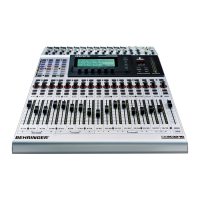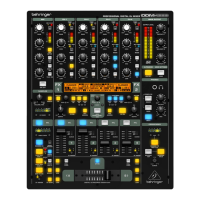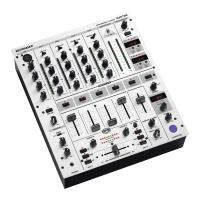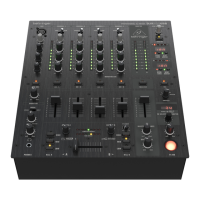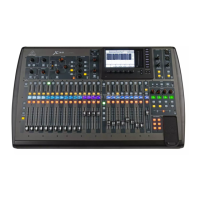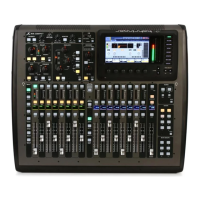48
15. APPLICATIONS
Now that we have discussed the basic features of your
DDX3216 in full detail, it is time to describe its practical uses by
means of a few examples. Understandably, the following chapter
can only give you a few hints as starting points, and does not
claim to cover all possible uses of the console. Your imagination
is the limit, and we are excited to see how you will use your
DDX3216.
15.1 Studio setups
With its bus architecture and routing facilities, the DDX3216 is
the ideal “mixing center” for home recording, project and even
professional studios. The variety of analog and digital inputs and
outputs allows you to connect first-class peripherals and ensures
the high-quality processing of all signals fed to the console. The
following examples are meant to show you just a few connection
options:
15.1.1 DDX3216 in combination with one or several
ALESIS
®
ADAT
®
or TASCAM
®
recorders DA-38/DA-78HR
Owing to the optionally available ADAT
®
and/or TDIF digital
interfaces, it will be no problem to connect the DDX3216 to one
or several ADAT
®
or TASCAM
®
recorders DA-38/DA-78HR.
Connect the optical inputs and outputs of the ADAT
®
by means
of professional optical cables to the inputs/outputs on the ADAT
®
module of your DDX3216. If you are using a DTRS
®
recorder
made by TASCAM
®
, please connect it to the DDX3216 by means
of a TDIF-D-Sub-25 cable.
DDX3216 as master
Adjust your ADAT
®
or DA-38/DA-78HR recorder to lock to an
external sync source (wordclock sync source set to DIGITAL
IN). On the FS CLK page in the SETUP menu of your DDX3216,
define “INTERNAL 44.1 kHz” or “INTERNAL 48 kHz” as the
wordclock source. When all adjustments have been made
correctly, the ADAT
®
or DA-38/DA-78HR recorder will lock to the
wordclock signals provided by the DDX3216. On the INPUT page
in the I/O menu you can assign the digital inputs of the I/O module
to the channels of the DDX3216. At the same time, the 16 busses
allow you to feed a maximum of 16 channels to two digital multi-
track recorders.
Fig. 15.1: The DDX3216 as master controlling two digital
multi-track recorders
ADAT
®
as master
To define your ADAT
®
recorder as the master, select the option
“Module 1” or “Module 2” on the FS CLK page in the SETUP menu,
depending on which option slot accommodates the ADAT
®
interface. Now, the DDX3216 should indicate whether it is
receiving wordclock code or not. If yes, the console will lock
automatically to the wordclock signals provided by the connected
ADAT
®
recorder.
+ In order to use several ADAT
®
s with your DDX3216,
please make sure that only one of them is defined
as the wordclock master, to which all other
recorders must be locked. Connect the units via
the ADAT
®
sync ports on the rear of your ADAT
®
s.
Please consult your ADAT
®
user’s manual for more
information on this.
Fig. 15.2: The DDX3216 as a slave locked to two digital
ADAT
®
recorders
DA-38/DA-78HR as master
Since the DDX3216 cannot process the wordclock information
contained in a TDIF signal, you need to connect the wordclock
output of the DA-38/DA-78HR recorder to the wordclock input
on the DDX3216. On the FS CLK page in the SETUP menu, set the
CLOCK to “Wordclock”.
+ Any additional DTRS
®
recorders are supplied with
wordclock code via the sync port of the master
recorder, and are configured as slaves. Please
consult the user’s manual of your DTRS
®
recorder
for more information on this connection.
Fig. 15.3: The DDX3216 as a slave locked to two digital
DTRS
®
recorders
Use channels 1-16 for the connection of musical instruments
and microphones. Channels 17-32 are configured on the INPUT
page in the I/O menu, so that they accept the digital inputs of the
ADAT
®
or TDIF modules, i. e. they are used as the multi-track
recorder’s tape returns.
+ Please make sure that channels 1-16 have not MAIN
activated in their routing, as this could lead to a
superposition of signals, when combined with
channels 17-32 carrying the tape return signals.
When doing recordings, always monitor the tape
return signal coming from the multi-track recor-
ders!
15. APPLICATIONS

